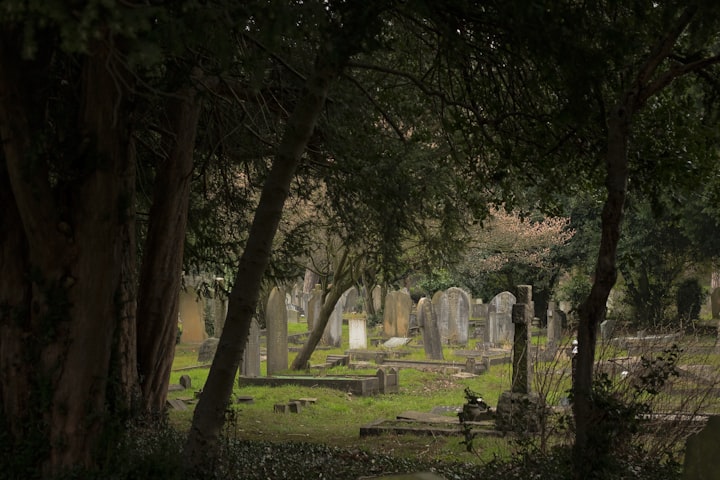Thousands Have Vanished in the Arizona Borderlands
From 1997 to 2018, the US Border Patrol reported 7,505 migrant deaths along the southwestern border. While this figure is mind-bogglingly tragic, the true number is likely much, much higher.

Not many people are searching Arizona’s isolated, scorching desert for the remains of missing migrants, whose families hundreds or thousands of miles away wait with bated breath for news. Finding missing migrants or searching for corpses isn’t in the Border Patrol’s job description, so a volunteer group called the Aguilas del Desierto bears the family’s sorrow. At least once a month, the volunteer group, many of them Mexican-American, solemnly comb the wasteland for bodies. Desperate families often reach them through Facebook and inform volunteers of the path their loved ones took, along with any identifying information. On one of their searches two days before Christmas, they found nine bodies together; all died of dehydration. On another day, they found 11 bodies in a single afternoon. The Arizona-Sonora borderlands are a graveyard.
“It’s like a gigantic cemetery right now, crossing the desert. Only a few make it. Once they get into the desert, there is no return,” said volunteer Pedro Fajardo to Alexandrea King for the CNN report, “‘No Olvidado’: These Americans find and bury missing migrants.”
In 2009, volunteers from another advocacy group stumbled upon the remains of a migrant who had succumbed to the heat. In his pocket, they found a dead hummingbird wrapped in cloth. Some Latin American cultures know the hummingbird as a symbol of strength and resilience. Likely this doomed young man stumbled across a dead hummingbird and took it with him, hoping it was a positive omen for the treacherous journey ahead. The Colibrí Center for Human Rights in Tucson, Arizona — colibrí meaning hummingbird — would make this anonymous man their namesake. He is one of 2,900 bodies that have been discovered in the Arizona desert along the border in the past twenty years. Countless others have disappeared and their bodies remain hidden by the remote and treacherous landscape.
The border separating Arizona and Sonora, Mexico is among the most dangerous crossings in the Americas. Starting decades ago, Central and Latin Americans have migrated en masse to the United States, fleeing extreme violence, poverty, and political instability in their home countries.
Starting in the mid-1980s, Border Patrol agents in the southwest were intercepting around a million would-be migrants every fiscal year, mostly at urban border crossings. In a bid to finally end the influx, they adopted a strategy of “prevention through deterrence” in the mid-1990s. Border Patrol increased agent presence in popular urban crossing areas. In addition to highly effective fortified crossings, Border Patrol used the natural landscape of the southwest to their advantage, knowing the incredible difficulty of passing through the desert on foot. Instead of deterring migration all-together, this policy pushed migrants from attempting to cross in busy, urban areas to instead trekking across the inhospitable deserts. This decreased the number of people apprehended by Border Patrol, but the policy turned the desert into a deathtrap for migrants.
From 1997 to 2018, the US Border Patrol reported 7,505 migrant deaths along the southwestern border. While this figure is mind-bogglingly tragic, the true number is likely much, much higher.
“The real number is probably much higher, but even going by the Border Patrol’s estimates, that is a rate of about one migrant death per day, every day of the last 22 years,” wrote James Verini for the New York Times article, “How U.S. Policy Turned the Sonoran Desert Into a Graveyard for Migrants.”
One needs at least a gallon of water per day when hiking in the Arizona desert. Natural water sources are scarce, so any water they need has to be carried on their backs. Due to the tragic frequency of deaths, individuals living along the border and non-profit groups like No More Deaths hike into the desert and leave water jugs for passing migrants.
According to IOM’s Missing Migrants Project, there have been 283 recorded deaths in the US-Mexico borderlands in 2020 thus far. 96 of those who died were from Central America while 173 were from Latin America and the Caribbean. Their 2020 records pale in comparison to 2019, a much deadlier year with 520 recorded migrant deaths. 20 of those were children. However, countless migrants simply disappeared on their journey through southern Arizona, their bodies lost to the unforgiving wilderness.
Kindness is criminalized in Arizona. No More Deaths, a humanitarian non-profit that advocates for migrants out of Ajo, Arizona, regularly has their humanitarian camps raided. Officials charged eight of their volunteers with a variety of offenses a week after No More Deaths published a report accusing Border Patrol agents of dumping water jugs left by volunteers on migrant paths. One of the activists’ charges was “abandoning property,” apparently referring to the water, food, and blankets they left on migrant trails. Another volunteer, Scott Warren, was “[detained] in the town of Ajo on suspicion of supplying food, water and clean clothes to two undocumented migrants.” The charges against Scott were dropped two years later.
“Today the government took the position that people of conscience should not be prosecuted for acts of humanitarian aid. In other words, humanitarian aid, by definition, is not a crime,” said Greg Kuykendall on the courthouse steps when announcing the dropped charges against Scott Warren, as reported by No More Deaths.
Often, individual migrants die of exposure not realizing their journey will require weeks of walking instead of days. Coyotes, professional border crossing guides, often underplay the risks. If a person sprains an ankle and is unable to walk, the group must leave them behind. If someone is separated from the group, common when running from Border Patrol, they have no way of finding their guide and face almost certain death.
Not only do migrants die from exposure or dehydration in the incredibly rough terrain, but No More Deaths alleges that Border Patrol regularly chases crossing migrants into remote terrain, where they often perish after becoming lost.
According to local humanitarian groups, if a migrant has been missing for more than a month without contact, their families should start looking through the forensics system. The Colibrí Center for Human Rights in Tucson, Arizona works to help families whose loved ones have disappeared while crossing the border. Often this involves identifying their remains by searching available forensic systems. The group also tracks migrants who vanished while crossing the border. They have over 3,500 missing persons cases.
As stated by Doctors Without Borders, Central American migrants predominantly make the journey to the United States and Mexico to flee violence in their home countries — which Doctors Without Borders says is comparable to a warzone in Guatemala, Honduras, and El Salvador. But the long journey north is also rife with violence and exploitation. 57 percent of the people interviewed by the organization experienced violence while traveling through Mexico, whether assault, extortion, sexual assault, or torture. Mexican gangs and human trafficking organizations often target Central Americans through kidnapping and extortion.
“It’s clear from years of medical data and testimonies that many of our patients are desperately fleeing violence back home… These people deserve protection and care, and, at the very least, a fair chance to seek asylum. Instead they face more violence along the migration route, barred from countries where they wouldn’t be at risk. Now they are trapped in dangerous places with no way to seek safety,” said Sergio Martin, the head of mission in Mexico for Doctors Without Borders, quoted in a recent report released by the organization.
According to the recent Doctors Without Borders report, 61 percent of migrants interviewed were exposed to violence in the two years leading up to their migration north. Half of those cited their exposure to violence as a key reason they chose to leave their home country. Migrating families with children were much more likely to be fleeing violence, with 75 percent of those fleeing with children cited violence as a key reason, which includes forced gang recruitment. If they’re caught and detained by US Border Patrol, however, the dangers don’t end there. Doctors Without Borders reports that many of their patients reported terrible conditions in American custody, often in freezing cells with bright lights kept on 24/7, and denied adequate access to health care, blankets, food, clothing, and human dignity.
The conditions at the migrant detention centers are a humanitarian travesty, even more so during a global pandemic. The humanitarian non-profit that advocates for the migrants, No More Deaths, addressed this in a press release this summer.
“Meanwhile, precautions against the spread of the pandemic in cramped detention centers are abysmal. There is no soap in sinks, no access to gloves, and detained women and men just receive two face masks each — only after signing waivers of liability for the masks. Under these conditions, it is no surprise that more people are becoming infected with COVID-19. As of this writing, ICE acknowledges 69 known “positive” cases of COVID-19 at the La Palma facility alone. Recently, at an La Palma detention center in Eloy, detainees blocked the doors to their “pod” with tables and chairs, demanding masks, gloves, hand soap and testing. In response, the officers from CoreCivic — the for-profit company that operates many detention centers — broke through and shot them with rubber bullets and sprayed them with tear gas.”
The terrors migrant children face while separated from their parents are well documented. In many cases, the children’s basic needs are unmet and entire families are left broken and traumatized. The institutionalization of children, especially without the protective buffer of a parent, has horrible and lasting consequences on a child’s mental health and development. And the scale of this crisis is unfathomable. Since July 2017, more than 1,500 migrant children were separated from their parents after being detained separately. The American Civil Liberties Union claims that the true number of separated migrant children could be as high as 5,400 since the policy began. Recently, the ACLU announced that the parents cannot be located for 545 detained migrant children.
Speaking to Doctors Without Borders, one migrant from Honduras who suffered from three gunshot wounds said, “In my country, killing is ordinary — it is as easy as killing an insect with your shoe.”
Despite escaping the violence in their home countries, migrants’ experience of death and despair doesn’t end when they make it to American soil. While children are locked in cages surrounded by only strangers, another migrant trekking through the southwest succumbs to the elements and is added to the death toll. These migrants paid the ultimate price for the prospect of a better life, free from their home country’s problems of widespread violence, political instability, or lack of economy opportunities—privileges that many Americans take for granted.
If you’re interested in helping bring an end to this senseless tragedy, there are remote and local volunteer opportunities available. No More Deaths has some virtual volunteer positions and in-person volunteer opportunities for Arizona residents. The Colibrí Center for Human Rights welcomes donations, which are essential for continuing their work of identifying missing migrants. If you have neither time nor money, you can help by raising awareness of this issue in your circles.
About the Creator
Raisa Nastukova
Freelance journalist focused on stories of both Kashmir culture and society as well as the rising tide of climate change.






Comments
There are no comments for this story
Be the first to respond and start the conversation.